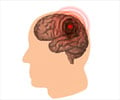Scientists from The University of Texas Health Science Centre at Houston are developing a robotic device to help recovering stroke and spinal cord injury patients.
The prototypes, brainchild of two faculty members in the Laboratory of Adaptive Technologies at The University of Texas Health Science Centre, are armed with a scissor-like claw that can perform a variety of functions, including moving a glass of water or snatching a pen off the floor.The research team, also including engineering students, is working on building assistive robotic devices that can perform everyday tasks for patients recovering from diseases affecting their motor skills and to give the patients exercise in the process.
"This is brand new," said Lex Frieden, who heads the lab at The University of Texas School of Health Information Sciences at Houston and is a senior vice president at TIRR Memorial Hermann.
"We are using the creative genius of young people to help stroke patients continue their rehabilitation at home," he added.
"Our goal is to motivate people with neurological diseases to continue their rehab at home. We're looking at these devices as motivational tools," said Dr Catherine Ambrose, an associate professor of orthopaedic surgery at The University of Texas Medical School at Houston.
Sudhir Shenoy and his student colleagues in the Department of Biomedical Engineering at UT Austin have outfitted their robot with a video camera so it can be dispatched to other rooms of a house to retrieve items.
Advertisement
The prototypes are equipped with lifts designed to raise the grabber to the height of a table for easy access to glasses, utensils and dishes, which is no easy task. Their maximum height is around 3 feet.
Advertisement
Source-ANI
SRM














